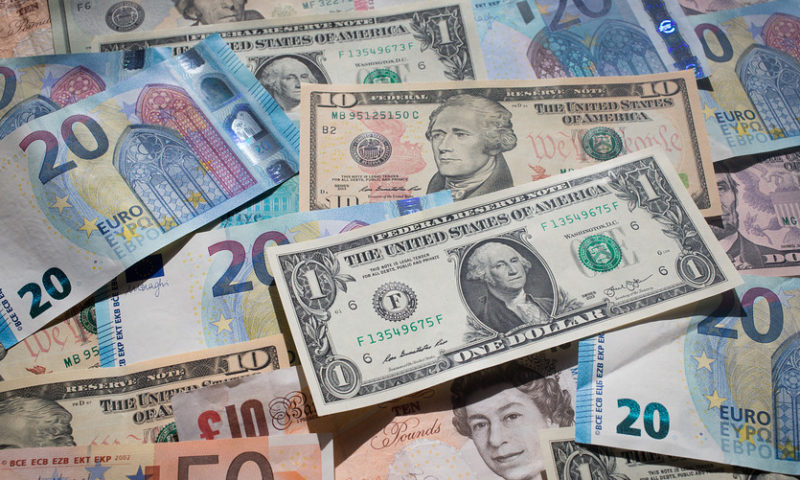Euro volatile after eurozone GDP miss, strong German inflation
Dollar traders rode a wave of confidence on Tuesday after President Donald Trump’s positive assessment of a possible trade deal with China.
Otherwise, investors digested mixed European economic data, including a disappointing third-quarter GDP reading and faster-than-expected German consumer price inflation.
Initially, the preliminary eurozone GDP numbers—reading 1.7% year-over-year in the third quarter, versus consensus expectations of 1.8% and the previous growth rate of 2.2.%—just added to existing concerns for the euro EURUSD, -0.1322%
“With growth in the region slowing, the uncertainty of Brexit looming and the fresh specter of political disarray after Angela Merkel announced [Monday] that she will step back from politics and end her career as chancellor when her term expires in 2021, the euro now faces an array of risks that could pressure the currency to a fresh multi-month low,” wrote Boris Schlossberg, managing director of FX strategy at BK Asset Management.
The euro EURUSD, -0.1058% slipped to a session low of $1.1341 earlier, but retraced its losses after Germany, the eurozone’s largest economy, posted CPI numbers. Inflation rose 2.5% year-over-year in October, exceeding expectations of 2.4%. The euro last fetched $1.1345, little changed from late Monday in New York. With the month almost over, the shared currency is on track for a 2.1% October decline, according to FactSet.
The British pound GBPUSD, +0.2204% also lost steam, in part after Monday’s autumn budget, in which Chancellor Philip Hammond declared the end of austerity, that failed to impress markets. Meanwhile, ratings agency Standard&Poor’s issued a report on the risks of a “hard Brexit” and the consequences it could have on the U.K.’s credit ratings.
The pound last bought $1.2709, down 0.7% and at its lowest since mid-August, according to FactSet.
Meanwhile in the U.S., the dollar strengthened as Trump spoke of the potential for a “great deal with China” in an interview with Fox News, thereby alleviating, for now, market anxiety about the trade spat between the world’s two largest economies.
The ICE U.S. Dollar Index DXY, -0.03% which measures the buck against six of its major rivals, was last up 0.4% at 96.998. The gauge is taking a course toward 97, which it last touched in May 2017, according to FactSet. For all of October, the index is on track to gain 2%, its best monthly performance since May.
In a tweet, Trump then once again hit out against the Federal Reserve’s monetary policy approach, arguing that a more dovish Fed would help the stock market higher. The Fed’s interest rate increases have been a supportive backdrop to the dollar all year, but has drawn a steady stream of criticism from Trump.
In Asian trading, China’s yuan touched its weakest level in a decade versus the dollar after Chinese authorities moved the yuan fixed range lower. One dollar last fetched 6.9673 yuan USDCNY, +0.0818% in Beijing and 6.9743 yuan USDCNH, +0.1033% in the offshore market.
“However, we repeat our advice that the market should not read too much into the likelihood that dollar-yuan will break above 7,” cautioned Win Thin, global head of currency strategy at Brown Brothers Harriman. “It is likely to happen within the context of broad-based EM weakness.”

